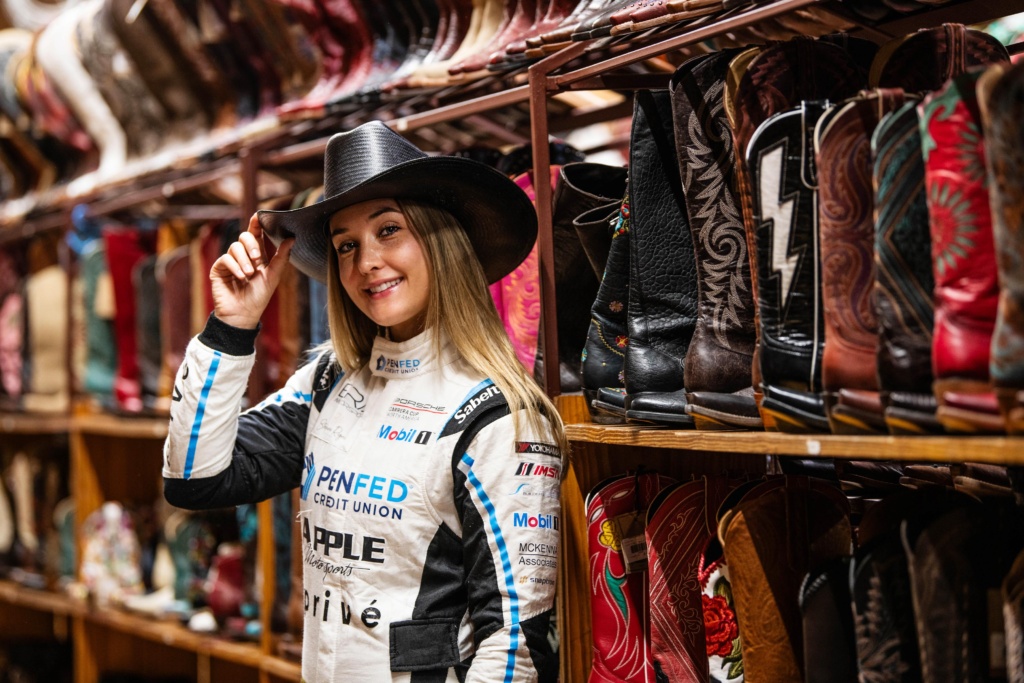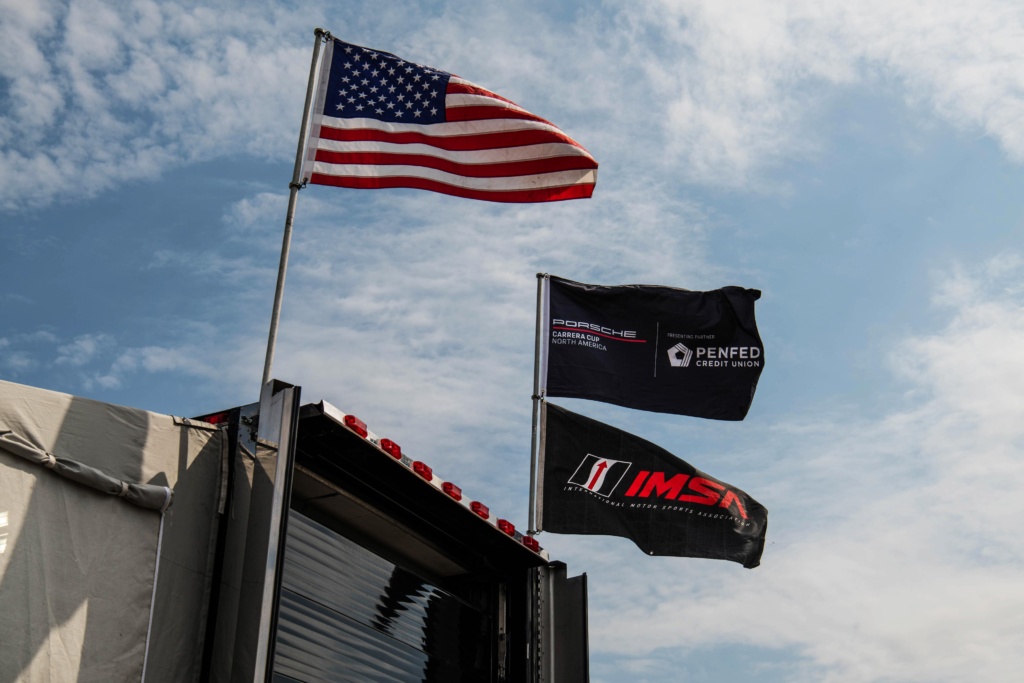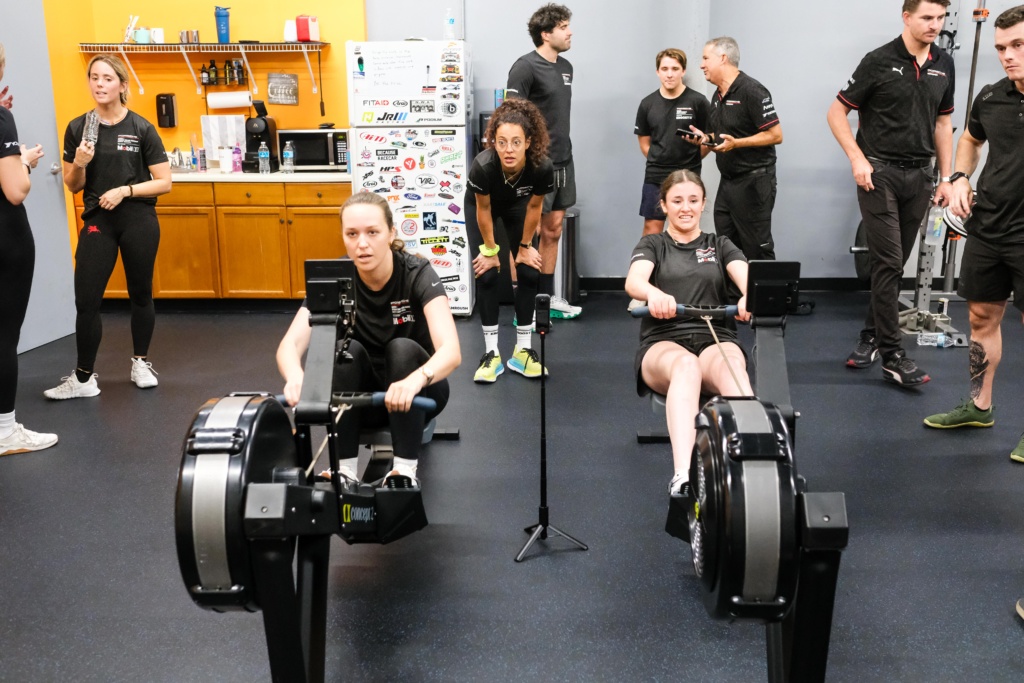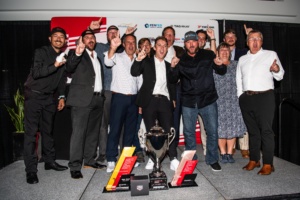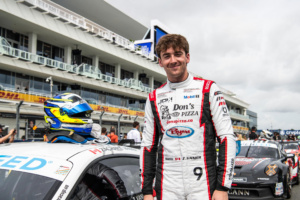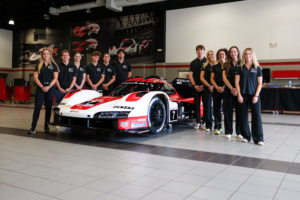
The popular Porsche Driver Development programs, including the Junior and Female Driver initiatives, offered by Porsche Motorsport North America (PMNA), will continue in 2026. Each program provides participants in Porsche customer racing with financial support and development tools to advance their motorsport careers.
PMNA has announced the details of the 2026 Porsche Junior and Female Driver programs, which support eligible drivers in Porsche Carrera Cup North America, Porsche Sprint Challenge North America, and Porsche Sprint Challenge USA West. Drivers competing in a Porsche who meet eligibility criteria in other open-competition championships, including IMSA and SRO, may also receive support through these programs.

The Porsche Junior program officially launched in 2021 alongside Porsche Carrera Cup North America but has its roots in the Porsche Young Driver Academy dating back to 2012. The Female Driver Program was introduced in 2022. Since their inception, both programs have helped develop the careers of prominent drivers within the Porsche Motorsport Pyramid North America, including Loek Hartog, Elliott Skeer, Seb Priaulx, Parker Thompson, and Kay Van Berlo, many of whom have achieved success on the world stage.
Both programs emphasize driver development through performance-based incentives, including race tires and entry fee support. Seminars during Porsche Carrera Cup North America race weekends cover topics ranging from performance thinking to car setup and driver-engineer communication, with guidance from Porsche racing legends Richard Westbrook and Patrick Long.
For the third consecutive year, a two-day seminar will take place at the Porsche Penske Motorsport shop in Mooresville, North Carolina. This in-depth program includes sessions on sponsorship activation, social media, physical fitness, mental training, and media skills.
“All of us at Porsche Motorsport North America are proud of the drivers who participate in these programs year after year,” said Volker Holzmeyer, President and CEO of PMNA. “The Porsche Driver Development programs have grown in both quantity and quality over the years, and we have seen graduates achieve great success. We wish next year’s class the same and welcome all aspiring drivers to the Porsche Motorsport Pyramid.”

In addition to training, both programs provide financial assistance.
Female Driver program participants receive 50 percent of entry fees for Porsche single-make races covered by PMNA. The top female driver in each Porsche Carrera Cup North America race earns a free set of tires for the next race weekend, with an additional set awarded to the top point scorer across the weekend. Top-scoring drivers in Sprint Challenge North America and Sprint Challenge USA West receive a free set of race tires for the following weekend’s events.
Similarly, Junior Program participants can earn race tires based on championship performance, as well as entry fee support in Porsche Carrera Cup North America. The highest-finishing drivers in each Porsche Sprint Challenge category may have their 2027 entry fees covered, helping them progress through the Porsche Motorsport Pyramid North America.
All of last year’s PMNA Selected Drivers came through the Junior Program. Riley Dickinson and Loek Hartog used awarded parts credits to compete in GT4 America in Porsche 718 Cayman GT4 RS Clubsport machinery. Tom Sargent competed with Wright Motorsports at Michelin Endurance Championship rounds in the IMSA WeatherTech Championship using similar program support.
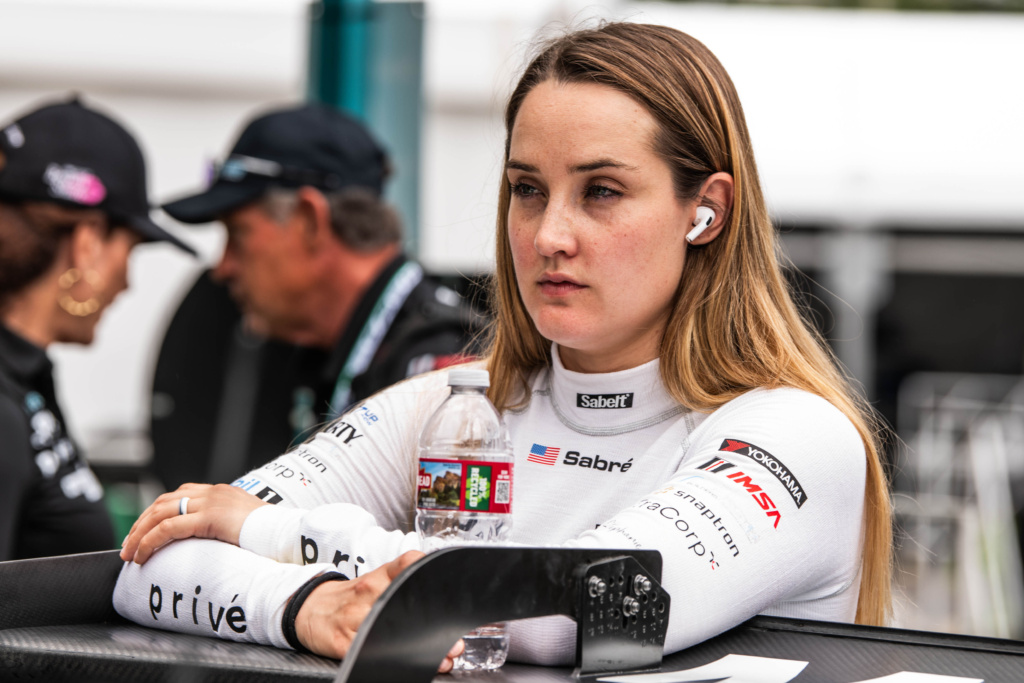
Other drivers, like Zachary Vanier, leveraged their Junior Program experience to compete in Porsche Carrera Cup North America. After winning the Porsche Sprint Challenge North America title in 2023, Vanier has captured five Carrera Cup North America victories and represented North America at the Porsche Junior Shootout in Portugal. Paul Bocuse advanced through the Porsche Motorsport Pyramid North America, winning a Cayman Pro-Am championship in Porsche Sprint Challenge before moving to the GT3 Cup Pro-Am class and eventually to Porsche Carrera Cup North America in 2025.
The Female Driver Program continues to expand, growing from a single participant in its inaugural 2023 season to seven drivers in 2025. Three drivers—Sabré Cook, Madeline Stewart, and Ashley Freiberg—competed full-time in Porsche Carrera Cup North America in 2025. Loni Unser, Erika Hoffmann, and Anna Cecchi each won Porsche Sprint Challenge races, while Therese Lahlou achieved podium finishes in the highly competitive GT3 Cup Pro-Am class.
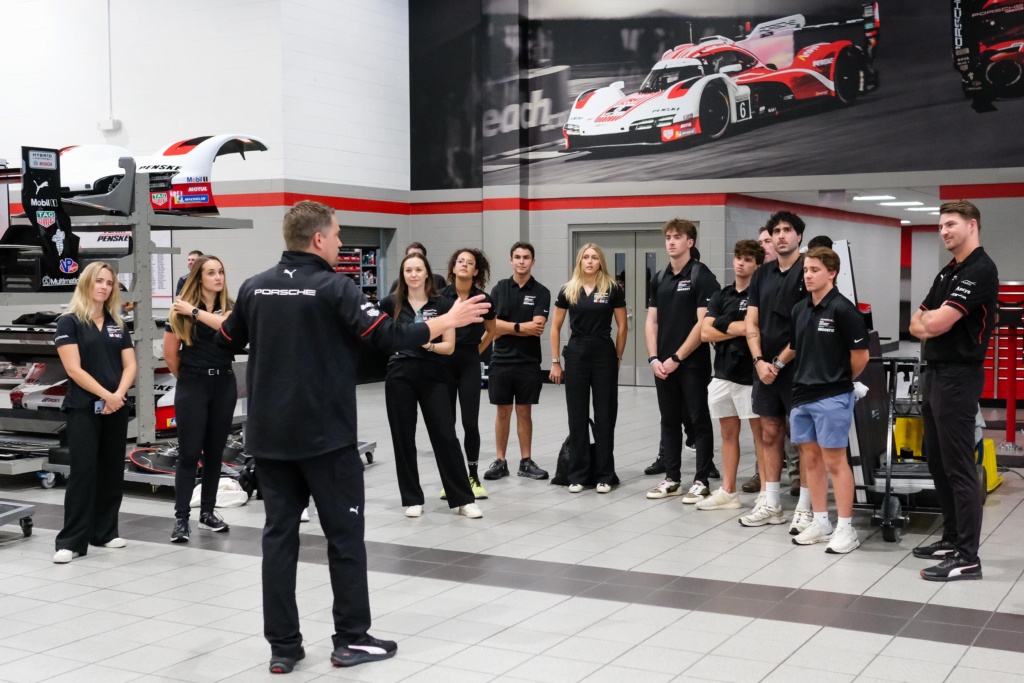
Zachary Vanier has been chosen to represent Porsche Motorsport North America at the prestigious Porsche Junior Shootout, the global evaluation that brings together the top young drivers from Porsche Carrera Cup championships around the world.
The 2025 edition begins in Cologne, Germany on November 14 before moving to Autódromo do Estoril in Portugal for two days of on-track testing from November 17–18.
For Vanier, the call from Porsche Motorsport North America confirming his nomination was both a surprise and a defining moment in his career. The Canadian has been part of the Porsche Motorsport North America EBOOST Junior Program for the past three seasons, but his selection as the 2025 global Shootout representative raises the stakes to an entirely new level.
“To be honest, the initial reaction was pure surprise,” Vanier said.
“When the guys at Porsche Motorsport North America told me they had decided to send me, I was speechless. This was my goal all year, what I’d been working toward, but hearing it confirmed was surreal.
“There’s a huge sense of pride knowing how many talented drivers would love to have this opportunity.”
The Porsche Junior Shootout is regarded as one of the most selective development programs in global motorsport, with past Shootout winners including IMSA stars Matt Campbell, Mathieu Jaminet, Laurin Heinrich, and Klaus Bachler – all of whom have advanced into championship-winning factory-supported endurance racing programs.
“Being chosen for the Shootout puts you in an entirely new conversation,” Vanier said.
“It’s not just about selection—it’s about being seen as someone who represents the qualities a manufacturer like Porsche values. It’s motivating to know I’m getting the same opportunity as some of those drivers who’ve gone on to incredible careers.
“My focus now is just to be myself, believe in my abilities, and really enjoy the process. You only get one shot at this.”
The Porsche Junior Shootout combines both on-track and off-track evaluations, including simulator sessions, fitness and mental assessments, business presentations, and interviews with Porsche Motorsport staff. The 2025 program begins at the Porsche Esports Performance Center in Cologne before two days of testing in identical Porsche 911 GT3 Cup (type 992.1) cars at Estoril.
“Luckily for me, the series is supporting some pre-event testing so I can start that learning curve before we get there,” Vanier said.
“I’ve also got a great group behind me to organize a test in Europe to make that step more realistic. Everyone at the Shootout is obviously talented, so the key for me will be to stay calm, not get overwhelmed, and trust in what I’ve developed through my years with Pfaff Motorsports, MDK, and JDX Racing.”
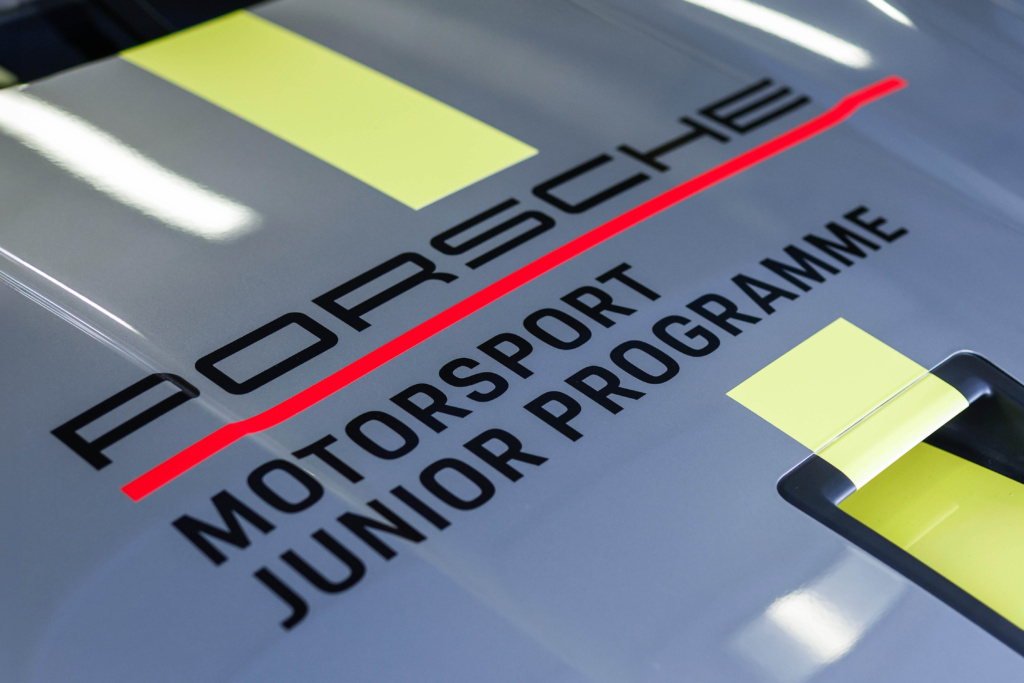
The 2023 Porsche Sprint Challenge North America champion will also lean heavily on simulator preparation in the lead-up to the event, working with Advanced Sim in Montreal to refine his technique.
“I’ve really stepped up my simulator work this year,” he said. “That’s where I’ll be spending most of my time before my test and before heading to Germany. I’m even practicing without ABS to make it as realistic as possible.”
His 2025 Porsche Carrera Cup North America campaign with JDX Racing included wins at Watkins Glen and Indianapolis and a strong run of podiums that placed him among the season’s top performers.
“This season was full of highs and lows,” Vanier reflected.
“Miami Race 1 was a tough one with the DNF—it really ended our championship hopes early. That’s when my focus shifted from chasing the title to chasing the Shootout nomination.
“But the wins at Watkins and Indy were huge for me and for the team. Finishing top three in the championship two years in a row and then being selected for the Shootout feels like the perfect way to close this chapter.”
Vanier credits JDX Racing’s leadership—particularly Jeremy Dale and Harrison Brix—for helping shape his growth over the past two seasons.
“From the team’s perspective, I think there was almost a sense of expectation,” Vanier said.
“They’ve seen how much I’ve developed and how I’ve tried to lead within the team under pressure. They gave me the platform to show what I can do, and that ultimately led to this.”
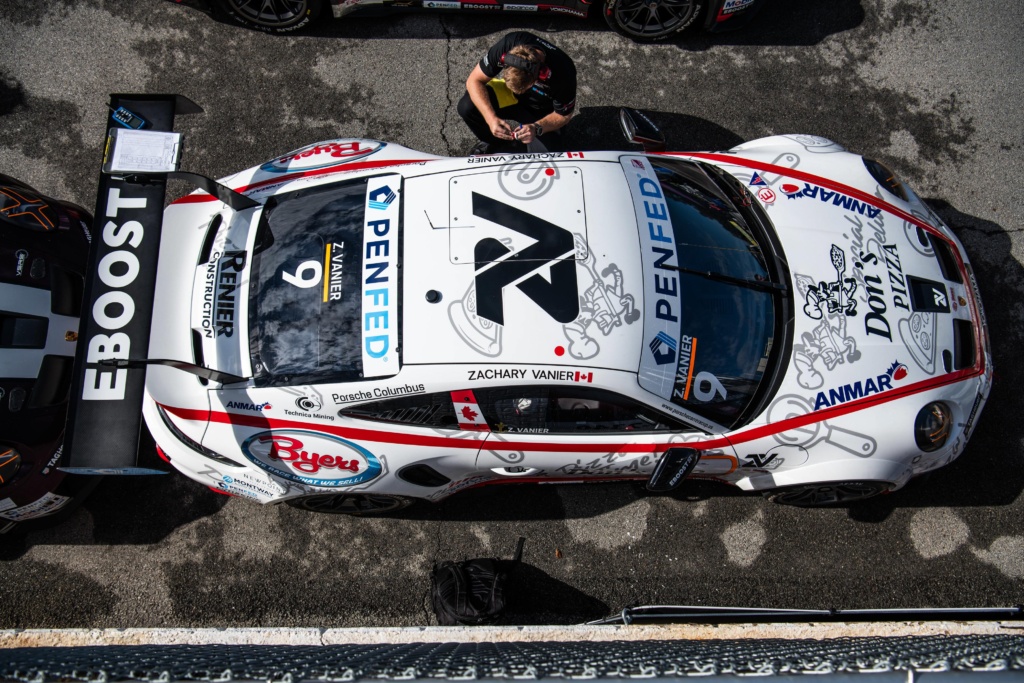
As he prepares for his first laps at Estoril, Vanier sees the Porsche Junior Shootout not just as a test, but as a continuation of the development path that Porsche Carrera Cup North America provides.
“Carrera Cup North America is the most competitive and most respected step in the Porsche Pyramid,” he said.
“It’s a single-make series, so it all comes down to the driver—and that’s why it’s so highly regarded. Being in this series has helped me mature both inside and outside the car. It’s given me the experience and confidence I’ll need heading into the Shootout, and hopefully into the next step of the Porsche Motorsport Pyramid in 2026.”
The winner of the Porsche Junior Shootout earns official Porsche Junior status for the following season, joining the ranks of factory-supported drivers within the Porsche Motorsport system and gaining opportunities to compete internationally across the brand’s GT and endurance programs.
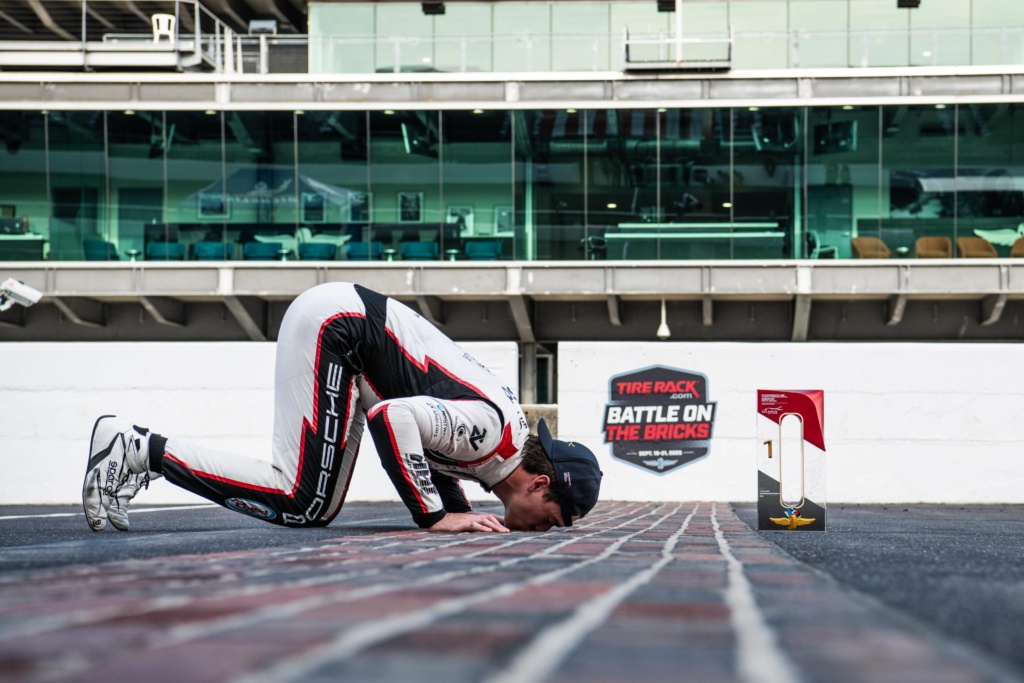
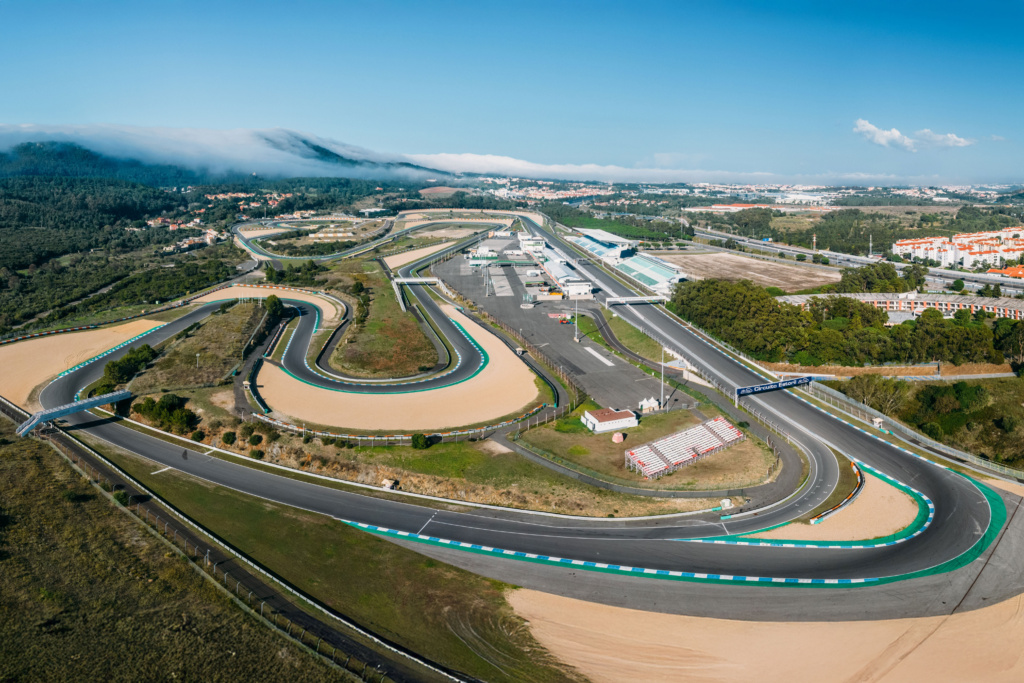
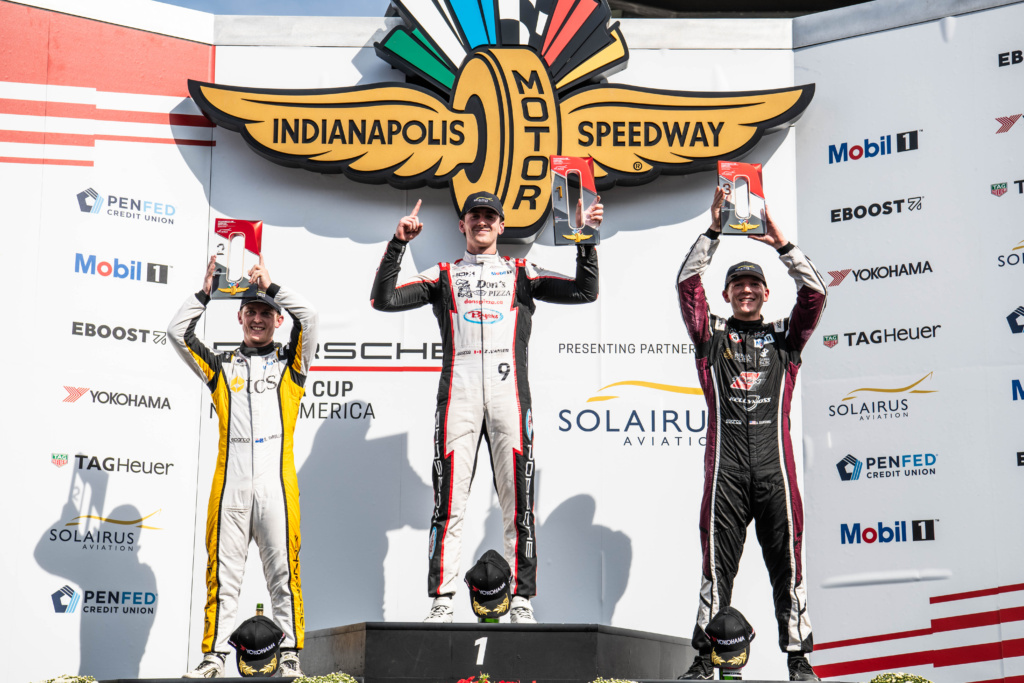
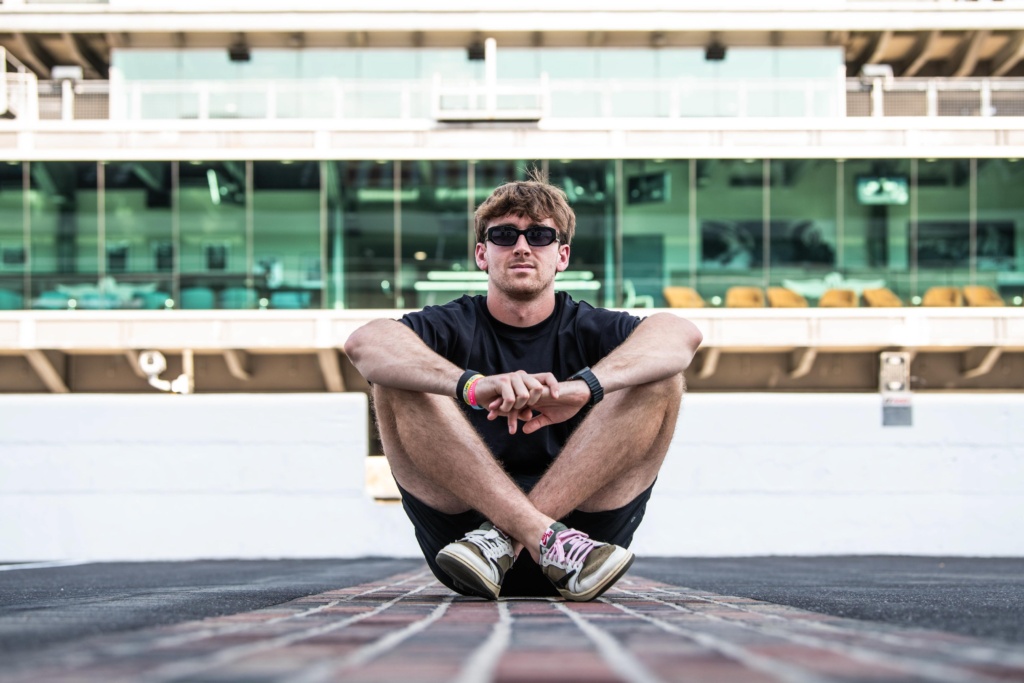
Latest news
Ryan Yardley’s path to the 2025 Porsche Carrera Cup North America championship was anything but conventional.
The New Zealander, who once spent four years out of a race car, capped off his third full season in the United States by delivering TOPP Racing its first overall title—and, in doing so, toppled record-setting champions Kellymoss in one of the closest championship battles the series has seen.
“This was the goal that myself and everyone at TOPP Racing had set for ourselves when I first joined the team in 2023,” Yardley said after clinching the crown at Circuit of the Americas.
“It’s been a big learning curve—this is my first championship in a sports car, and Carrera Cup is known as one of the hardest championships around the world. That’s definitely true here in North America, with the level of competition and the teams involved.
“It feels amazing, not only for myself, but for the team, the sponsors, and everyone who’s supported me both here and back home.”
Yardley’s journey from karting and single-seaters in New Zealand to sports car champion in America wasn’t straightforward. After progressing through karting, Formula Ford and the Toyota Racing Series – Yardley hit a career standstill in 2018.
“I kind of had no options left,” he said.
“I didn’t really have any money to continue racing. I knew if I wanted to make a career out of this sport, I had to move overseas. I had two options: Asia or America.
“Asia was tempting, but I also looked at the American route, the same way guys like Scott Dixon did. Eventually, Kiwi Motorsport over here offered to take me in and show me the racing scene, but I knew I wasn’t coming over to drive a race car—I had no money, no opportunity. I was just coming over to chase the American dream.”
That decision would set in motion a remarkable story of perseverance. Yardley spent four years on the sidelines—not racing, but attending events, working with teams, and networking until the right opportunity came along.
“It was pretty tough going through that period of not driving but being at races, meeting people, putting myself out there as much as I could,” he said. “After four years on the sideline, we managed to get back in a race car—and the rest is history.”
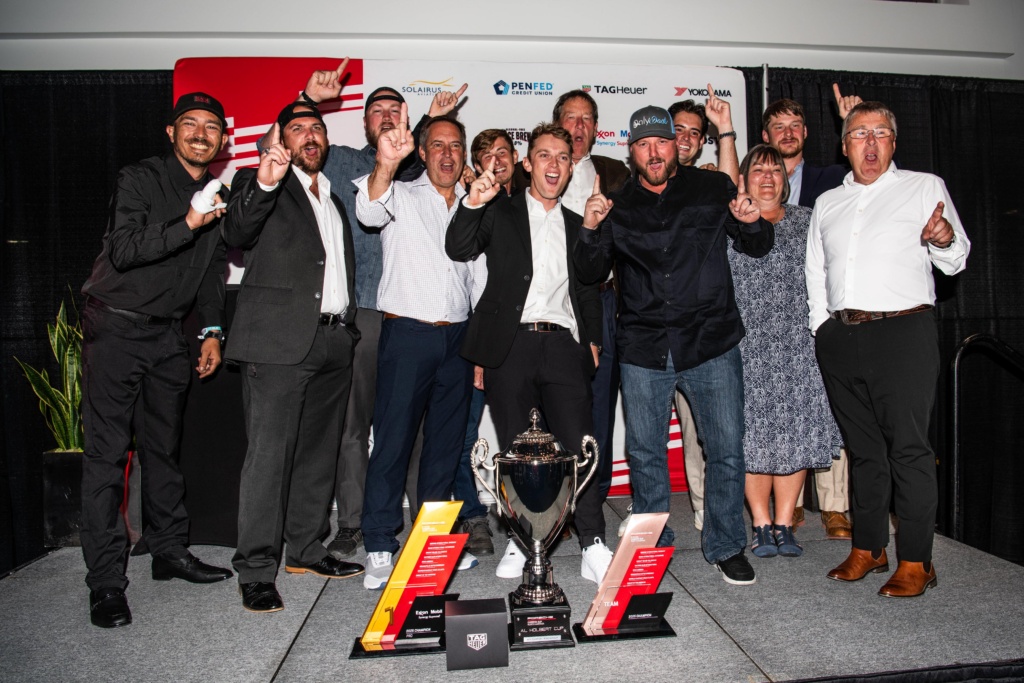
That “history” began with a chance introduction at Motorsport Ranch in Cresson, Texas, where Yardley first crossed paths with TOPP Racing team principal Todd Oppermann.
“The Formula car team I was with at the time, Crosslink, introduced me to Todd,” he explained.
“They’d worked together 20-something years ago in IndyCar, and both teams were based out at Cresson. I didn’t expect much—I figured I’d be told I needed a bunch of money to race. But thankfully, Todd gave me a test.
“The test went well, and at the end of 2022 I met David Baker behind Turn 15 at the Formula One Grand Prix in Austin. Thankfully, David liked me and offered me the ride for the following year. It’s crazy how this all came together—the right people, the right time, the right place.”
That opportunity led to Yardley’s Carrera Cup debut in 2023—a season that, while light on results, set the foundation for everything that followed.
“The first year was a massive learning curve,” he said.
“Half the tracks were new to me. I was still figuring out how to drive a GT car. They’re heavy compared to single-seaters, they roll a lot more, and you have to manipulate the car differently.
“I think halfway through that first year, it started to click, but the results just didn’t show. By COTA, we were quick, and that podium in the final race of the season gave us momentum.”

That steady progress continued into 2024, when Yardley became a consistent front-runner and race winner. By the start of 2025, he and TOPP Racing had evolved into a legitimate title contender—facing off against 2023 champion Riley Dickinson and powerhouse Kellymoss.
“Even at the start of this year, knowing Riley was coming back, it was cool to go wheel to wheel with him,” Yardley said.
“In 2023, he was so far up the road from all of us. To actually be fighting him this year was pretty awesome.”
That battle would stretch across eight weekends and 16 races, culminating in a title showdown in front of the Formula 1 crowd at Circuit of the Americas—fittingly, the same track where Yardley first scored a Carrera Cup podium two years earlier.
“I probably came into the weekend the most relaxed I’d been all year,” Yardley said.
“Earlier in the season, I put too much pressure on myself, trying to be perfect. But at COTA, I knew it came down to one weekend. The team’s word for the weekend was ‘execution,’ and that’s exactly what we did.
“Qualifying was pretty special—both laps were really good. My teammate Tyler [Maxson] was only a tenth behind me, and the gap to the rest of the field was huge. It was a faultless weekend.”
Yardley swept both poles and both races, securing TOPP Racing’s first-ever Carrera Cup North America title.
“To do it with the same group we started with—that’s the most rewarding part,” he said.
“I had the same mechanic for three years, the same guys at the shop, the same sponsors in TCS and David Baker. When I joined, we weren’t one of the powerhouse teams.
“We were mid-pack, learning, and just trying to survive. To come back and take down Kellymoss, who have been the benchmark in this series for years, that’s special.”
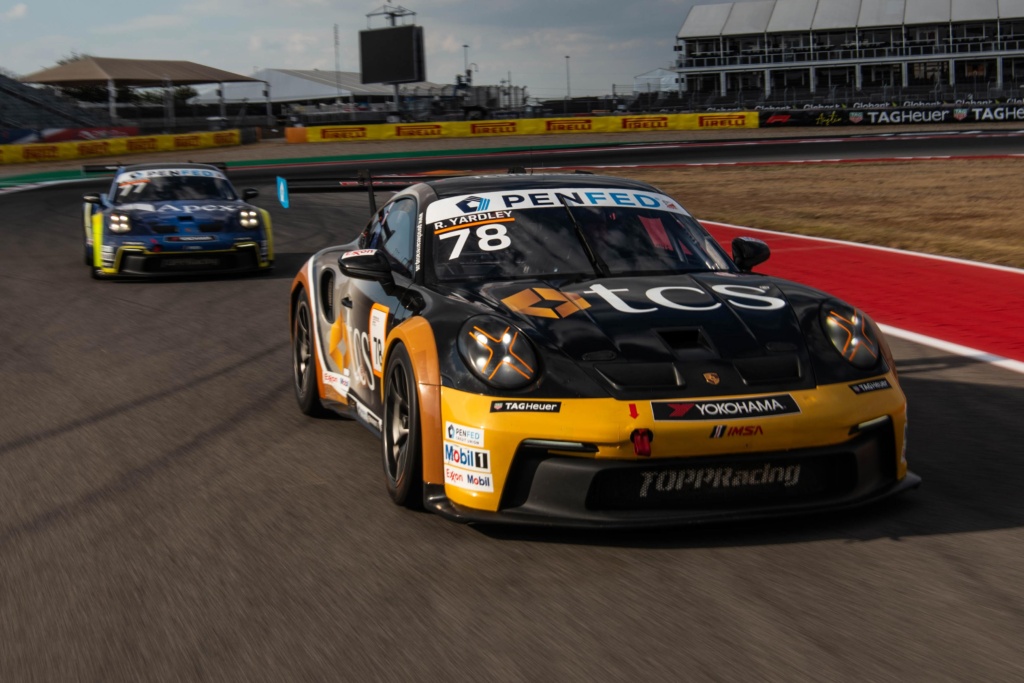
Back home in New Zealand, Yardley’s championship news spread quickly.
“The reaction’s been amazing,” he said.
“When I got back to the transporter after the race at COTA, I looked at my phone and had over 200 messages. It’s pretty special. And to have my parents there that weekend—that was incredible.
“They were also there in Montreal earlier this year when I won. They’ve supported me since day one, so to share that with them means a lot.”
As he reflected on the season and the team’s rise, Yardley couldn’t help but look ahead to the next chapter. “It’s been awesome to grow with TOPP Racing,” he said.
“To be part of the team’s evolution and to see guys like Tyler and Cole (Kleck) coming through now—that’s really cool. Tyler pushed me all year. Whether it was practice, qualifying, or a race, he made me better. I wish nothing but the best for them.”
Looking forward, Yardley hopes to join the impressive list of Carrera Cup North America champions who have gone on to establish themselves in professional GT racing.
“It’s cool to be part of that list,” he said.
“There’s only been five champions so far in this series, and when you look globally, most Carrera Cup champions go on to bigger things. The hard work doesn’t stop here—it’s going to be a busy off-season putting deals together for next year, but the goal is clear.
“I’ve made it known that I want to race in the IMSA WeatherTech SportsCar Championship. Whether that happens next year or down the road, that’s what I’m working toward.”
From kart tracks in Christchurch to the top step of Porsche Carrera Cup North America, Yardley’s climb has been fueled by patience, persistence, and belief. The same resilience that kept him in the paddock through four years without a drive has now made him a champion—and perhaps, one of New Zealand’s next great exports in international sports car racing.
As Yardley put it simply: “Hopefully, this is just the next step in the journey. There are so many people who’ve been part of it—and I want to keep bringing them along for the ride.”
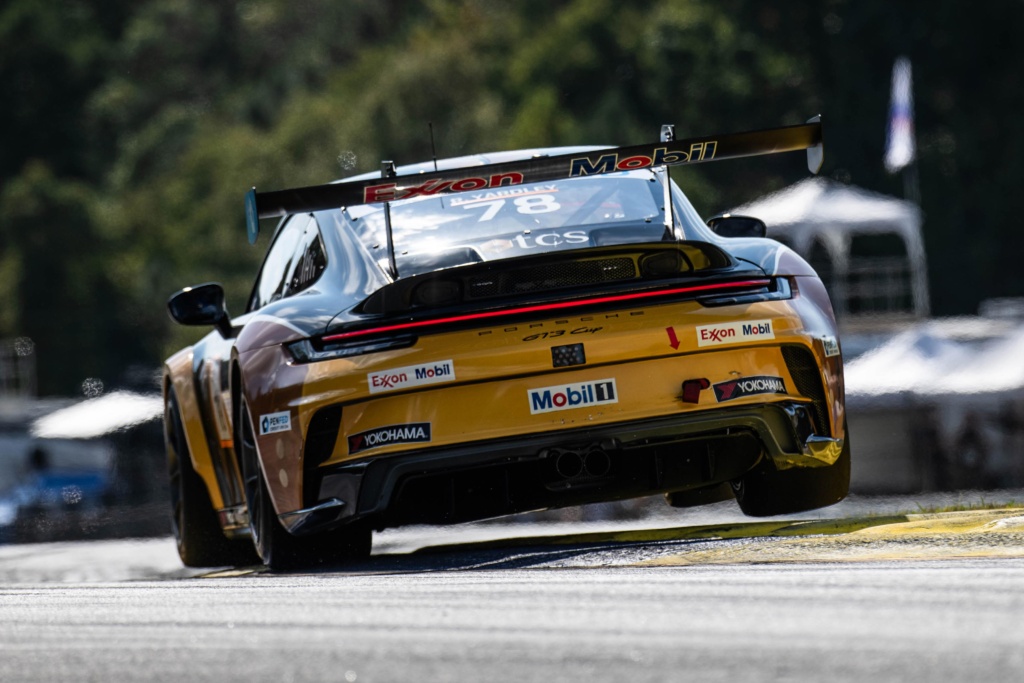
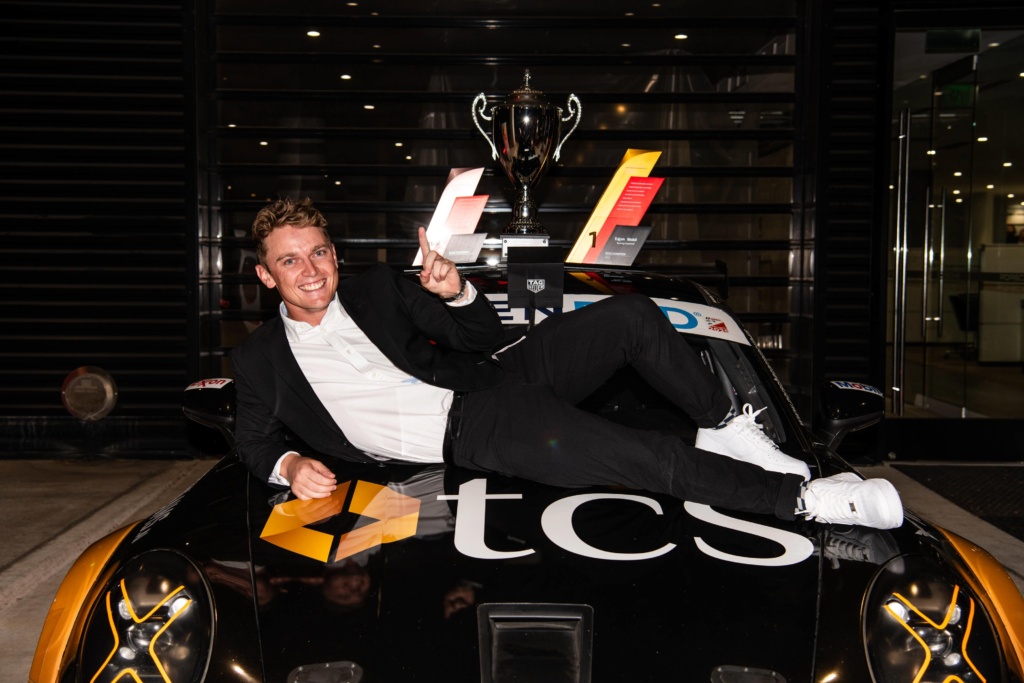
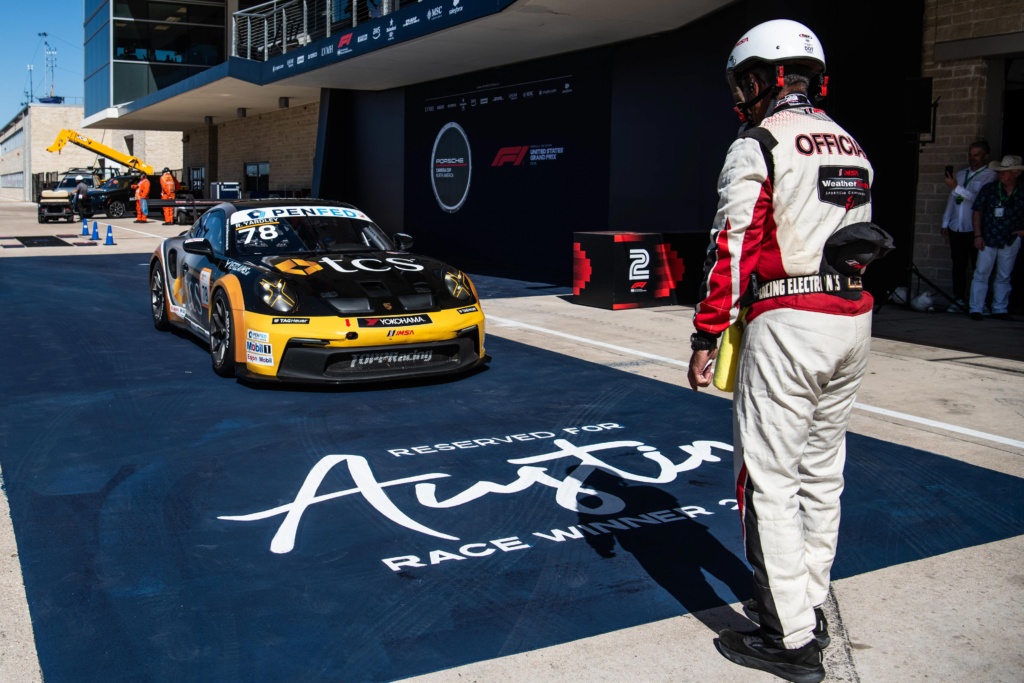
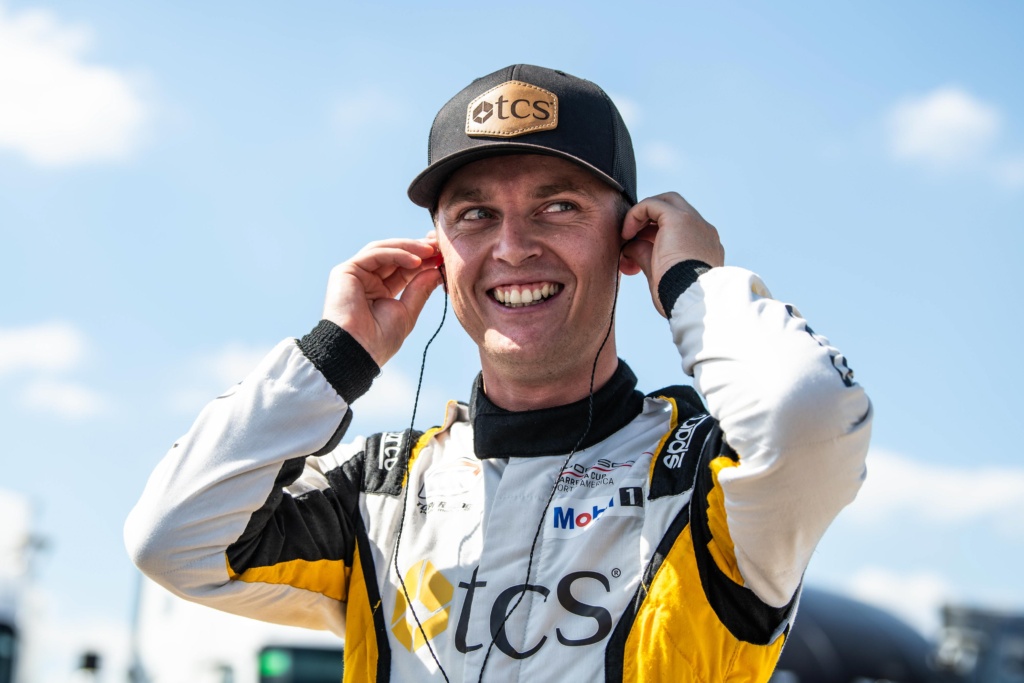
Latest news
Porsche Carrera Cup North America returns for 2026 with a schedule featuring eight of the most recognizable road racing events in the U.S., offering a mix of experiences for drivers and fans that feature shared weekends with Formula One, the IMSA WeatherTech Championship and the NTT IndyCar Series.
Opening in March at Sebring International Raceway, the premier one-make race series in the United States and Canada offers a pair of 40-minute sprint races at each of the eight rounds. The sixth season of Porsche Carrera Cup North America will feature the new Porsche 911 Cup car (type 992.2), offered in 2026 only to competitors running in Porsche Carrera Cup North America, Porsche Mobil 1 Supercup, Porsche Carrera Cup Germany, and Porsche Carrera Cup Asia.
Following the Sebring opener with IMSA, the championship travels west for its lone California race of the season at the Grand Prix of Long Beach. The series visits seven of the same venues as the 2025 season that produced a championship that was not decided until the final race of the season, ending once again at Circuit of the Americas in Austin, Texas, during the United States Grand Prix.
“This season will be a milestone championship for Porsche Carrera Cup North America,” Volker Holzmeyer, President and CEO of Porsche Motorsport North America, said. “It builds on the consistency offered by an already popular schedule, adding the Grand Prix of Long Beach and a brand-new race car to the mix. We appreciate the feedback we’ve gotten from our teams and drivers as we continue to make Porsche single-make racing the best it can be.”
“Welcoming Porsche Carrera Cup North America back to Long Beach is fantastic news for our fans and partners,” said Grand Prix Association of Long Beach President and CEO Jim Michaelian. “The series brings world-class talent, iconic machinery, and wheel-to-wheel competition that perfectly complements the Acura Grand Prix weekend. We’re thrilled to showcase Porsche’s proven driver-development platform on our streets once again.”
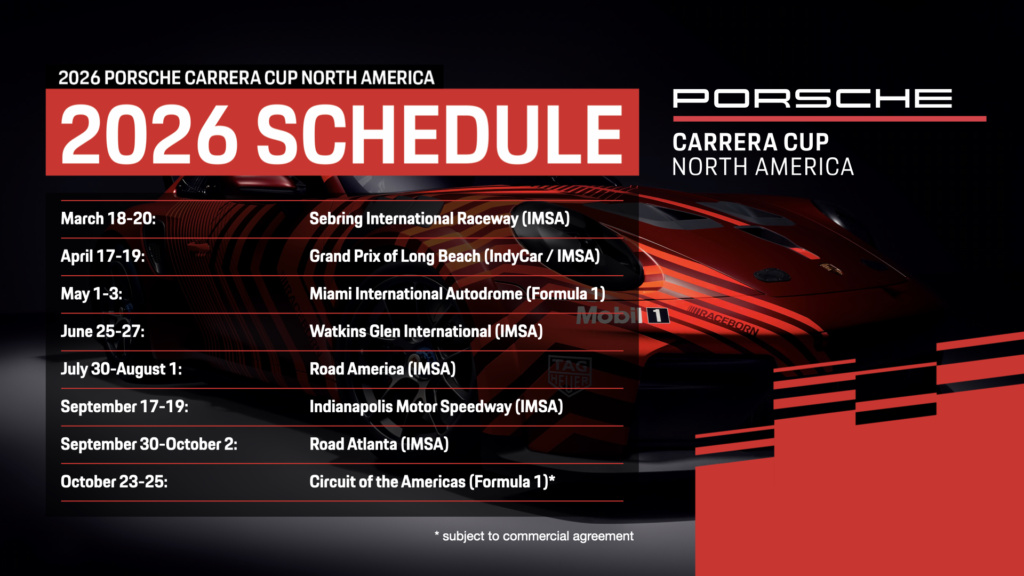
Classic road courses at Sebring, Watkins Glen International, Road America, the Indianapolis Motor Speedway and Road Atlanta will once again make up the ANDIAL Cup, a championship within a championship for those who prefer traditional road courses over street circuits.
As the pinnacle one-make series of the Porsche Motorsport North America Pyramid, the series is a crucial step for young drivers aspiring to a career in auto racing. Previous champions Seb Priaulx, Parker Thompson, Loek Hartog and two-time runner-up Kay van Berlo have gone on to success in top-level sportscar racing both domestically and abroad.

2026 Porsche Carrera Cup North America Schedule
- Round 1 – March 18-20: Sebring International Raceway (IMSA)
- Round 2 – April 17-19: Grand Prix of Long Beach (IndyCar / IMSA)
- Round 3 – May 1-3: Miami International Autodrome (Formula 1)
- Round 4 – June 25-27: Watkins Glen International (IMSA)
- Round 5 – July 30-August1: Road America (IMSA)
- Round 6 – September 17-19: Indianapolis Motor Speedway (IMSA)
- Round 7 – September 30-October 2: Road Atlanta (IMSA)
- Round 8 – October 23-25: Circuit of the America (Formula 1)*
*subject to commercial agreement
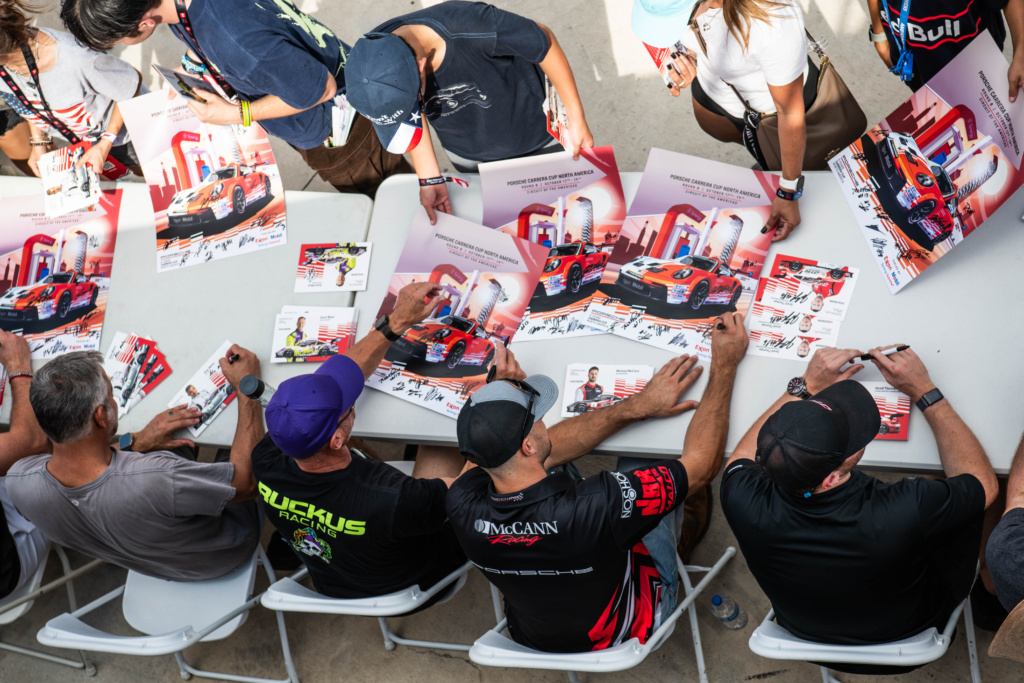
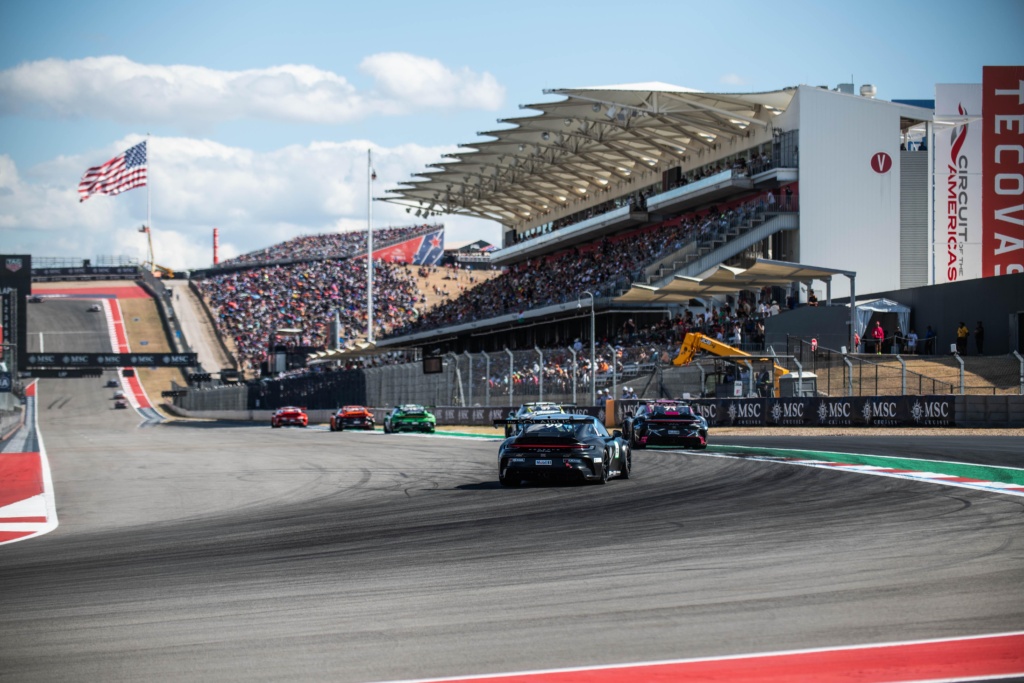
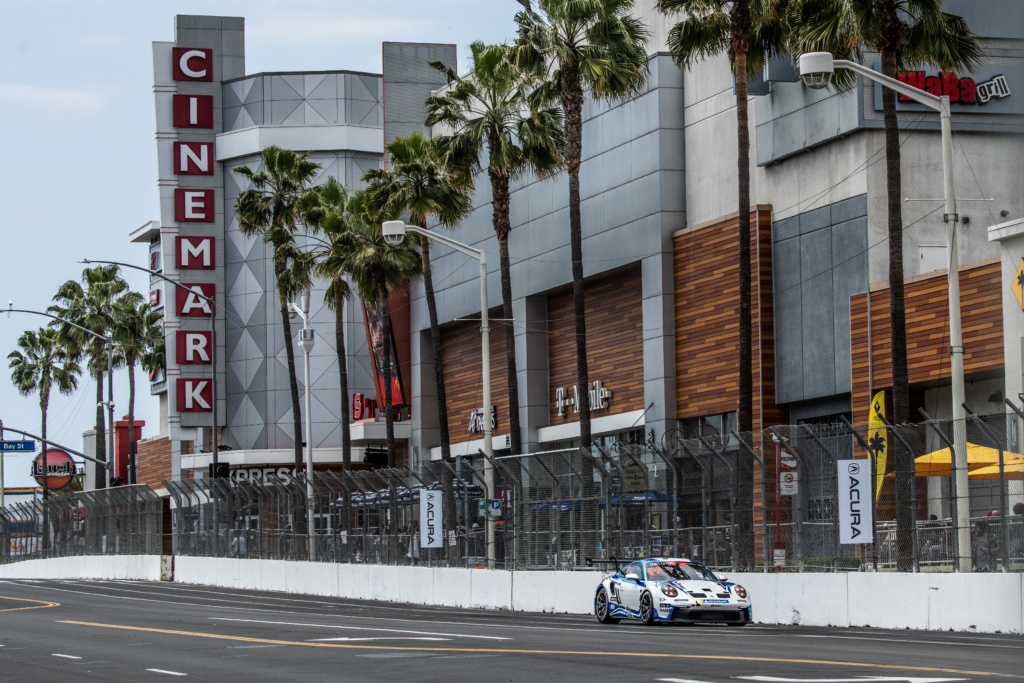
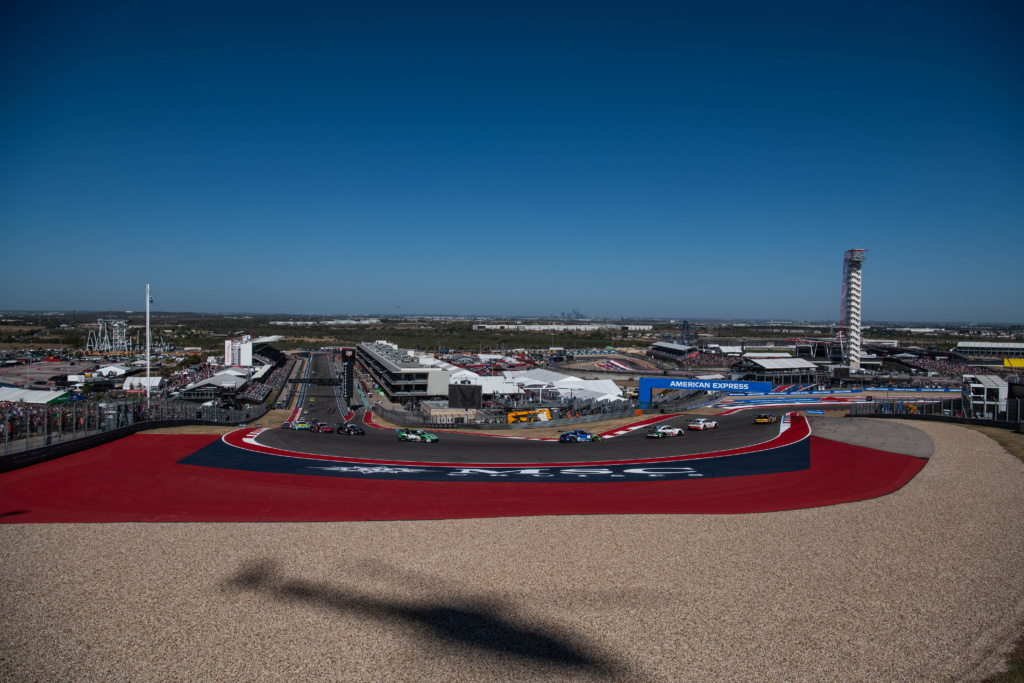
Latest news
Ryan Yardley completed a sweep at Circuit of The Americas, winning both races to secure the 2025 Porsche Carrera Cup North America ExxonMobil Pro class championship for TOPP Racing.
The Kiwi’s back-to-back victories in Austin during Formula 1’s US Grand Prix weekend delivered the decisive blow in a title fight that went to the final round of the 16-race season.
Born in Christchurch, New Zealand, and currently based in Texas,Yardley only led the point standings following two events in 2025 – after Indianapolis Motor Speedway in September, and after the finale at COTA.
However, with 14 podiums throughout the season, Yardley was consistently in the hunt for the championship. At COTA, he would outperform his closest rival and former series champion, Riley Dickinson, for top honors in the series’ fifth year of competition.
“It’s an unbelievable feeling,” said Yardley. “A massive thank you to David Baker from TCS, my car owner. I met him literally almost three years ago to the day here at COTA behind the Turn 15 grandstand, and somehow managed to convince him to let me drive his racecar for the last three years.
“Todd Oppermann from TOPP Racing Performance, without those guys, none of this would be possible. It’s unbelievable to think where we were three years ago to where we are today; it’s fantastic. I’m at a loss for words.”
Yardley and full-season teammate Tyler Maxson also helped propel TOPP Racing to the Entrant Championship by the season’s end.
Dickinson, who otherwise led the majority of the Carrera Cup Pro standings throughout 2025, finished second in the points following a third-place finish on Sunday at COTA. Dickinson was chasing Zachary Vanier for the runner-up spot and potential win, but the Canadian driver would not be overtaken after jumping from sixth to second by Turn 2 of the first lap.
Vanier finished third in the ExxonMobil Pro championship.
Alan Metni gave JP Martinez reason to sweat his position atop the Solairus Aviation Pro-Am championship standings during the weekend at COTA, but ultimately the latter held on for the title in his rookie campaign.
Metni qualified fastest for both races at his hometown track and won on Saturday, but the longtime Porsche single-make driver finished second to close the season. Before Race 2, Metni narrowed Martinez’s lead to 11 points, but could not complete the difficult feat.
With ACI Motorsports, Martinez went on for two podium finishes at COTA after six wins throughout the season, although his last came at Road America in August.
Winning in class on Sunday was Patrick Mulcahy, whose result came from a last-lap pass on Metni in the 35-minute race. It was Mulcahy’s second win of the season, and his additional five podiums throughout 2025 solidified a third-place spot for the GMG Racing driver in the final Solairus Aviation Pro-Am standings.
“I was born and raised in Dallas, Texas, so I’m in front of more-or-less my home crowd,” said Mulcahy of his first win at a Formula One event. “I’ve got my parents, a bunch of people from my company, and customers, so it’s a really special time for sure.”

Scott Blind arrived at COTA already crowned the Solairus Aviation Masters class champion from Indianapolis, but targeted a top-15 overall finish in the final two races.
While that goal didn’t come to fruition, the Ruckus Racing driver still reached the famous top step of a Formula One podium on Sunday, one day after a late-race incident removed him from a potential win in Race 1.
Blind started last on the grid in Race 2 with a new Porsche 992 GT3 Cup chassis, but within 10 minutes had passed his Solairus Aviation Masters class rivals for the lead.
“It did get in my head,” admitted Blind of the overnight chassis change thanks to a fellow competitor. “Of course, I wanted to make sure I gave the car back and didn’t have to buy it! I wasn’t pushing as hard, but I did want to get up front in the Masters. Once I did, I settled in behind Alex (Pratt, Pro driver). He gave me a couple shots… but the boys reminded me, ‘No, no, no! Just quit and get it home.’
“Leaving as a champion feels great. It’s a prestigious place to do it, and I’m very proud.”
Blind’s championship predecessor – Chris Bellomo – finished second in Sunday’s race at COTA, while Race 1 winner Todd Parriott rounded out the class’s final podium of 2025 and also finished second in the season-long standings.
Of the 2025 Porsche Carrera Cup North America rookies, encompassing all first-year drivers across the three classes, Aaron Jeansonne took home the Rookie Championship with Kellymoss. Indianapolis race two winner Jeansonne was the highest finishing rookie in more than half of the year’s races, and recorded two top-fives at COTA.
The 2026 Porsche Carrera Cup North America calendar has yet to be announced, but all Porsche Carrera Cup races from the 2025 season are available on IMSA and Porsche Motorsport North America‘s YouTube Channels.
Follow the Porsche Motorsport North America social channels on Facebook, Linkedin, Threads and X. for updates throughout the offseason.




Latest news
Ryan Yardley’s title charge in the Porsche Carrera Cup North America reached full throttle on Saturday at Circuit of The Americas.
The Kiwi produced a near-perfect day, first grabbing the Race Brew Pole Position Award and then converting it into victory under the Texas sun.
Entering the weekend trailing Riley Dickinson by two points, Yardley’s win swung the momentum — and the standings — firmly in his favor, giving him a 10-point cushion heading into the decisive final race on Sunday including the race two pole position.
“Honestly, I feel the same,” said Yardley after his win.
“Nothing has really changed. We knew going into this weekend that we just have to execute and do our job, and that doesn’t change for tomorrow. I’m just excited to be in a position to fight for a championship. That was the goal coming into this weekend… I’m excited to get back out there.
“After qualifying, it took a little bit of pressure off to be honest. Just get out there and enjoy it, we’re here at an F1 weekend in Austin. Get out there, enjoy the atmosphere, enjoy the moment, and bring it home tomorrow.”
Yardley got a strong leap at the green flag ahead of his ExxonMobil Pro class competitors, and held the position throughout the 35-minute race that ultimately ended under a yellow flag. Dickinson started fourth but finished third behind Kellymoss teammate Aaron Jeansonne.
Jeansonne is in a championship battle of his own among rookie drivers. His podium finish and a post-race penalty for rival Tyler Maxson widened the gap between the two in Jeansonne’s favor, giving Jeansonne a 26-point gap to wrap up the honor.
Also gaining valuable points on Saturday was Alan Metni in the Solairus Aviation Pro-Am category. Similar to Yardley, Metni gained a double pole position in qualifying and went on for a flag-to-flag win in his Kellymoss Porsche 911 GT3 Cup car.
Metni was 19 points behind championship leader JP Martinez prior to the weekend at COTA – Metni’s hometown track – and the longtime Porsche driver closed the gap to only nine points.
“I need to win tomorrow, need to get the fastest lap and see if we can get a little bit of luck,” said Metni, who finished ninth overall.
“I’ve got friends from work, I’ve got my daughter here. It’s not extra pressure, it’s just extra support, and it feels great. I love it.”
Both Yardley and Martinez can clinch their respective championships with a third-place finish in class, regardless of where their rivals finish.

In a shocking twist in the Solairus Aviation Masters class, champion-elect Scott Blind was the car responsible for the race-ending yellow flag. Blind was solidly in the class lead before running off into the barriers with seven minutes remaining.
Therefore, Todd Parriott brought home a second win for Kellymoss after inheriting the lead despite a difficult qualifying earlier in the day. It was Parriott’s third win of the season and first since Watkins Glen International in June.
“It just finally came to me in the end,” said Parriott. “After the accident at Road Atlanta in Sprint Challenge, it took a while, and all of a sudden it just clicked. About the fourth or fifth lap, it just all started to feel strong.
“The F1 events are fun. This place is great, the stuff they put on – the teams, everybody – it’s just awesome.”
Chris Bellomo was elevated to second place, while despite the incident, Scott Blind finished third.
The final Porsche Carrera Cup North America race of the year is scheduled for Sunday at noon ET prior to the Formula One United States Grand Prix at 3 p.m. ET.
All Carrera Cup races, including replays from Road Atlanta, will be shown live on IMSA and Porsche Motorsport North America YouTube Channels, IMSA TV, Peacock, and the Porsche Motorsport North America social channels on Facebook, Linkedin, Threads and X.




Latest news
Championship contender Ryan Yardley came out swinging in the Porsche Carrera Cup North America finale weekend, claiming his most significant Race Brew Pole Award of the year on Saturday morning ahead of fellow title hopeful Riley Dickinson.
At Circuit of The Americas in Austin, Texas, Yardley will start first on the grid for Race 1 following a last-lap flyer of two minutes, 6.221 seconds in qualifying (a new Carrera Cup qualifying record at COTA). The session was crucial for Yardley, who no sits even in points with Dickinson in the ExxonMobil Pro class standings with two races remaining in the season.
Further to Yardley’s advantage, his rival will start fourth-in-class behind Tyler Maxson in second and Aaron Jeansonne in third, and Yardley will also start first in Race 2 on Sunday.
“It was awesome to get the double pole,” said the Topp Racing driver. “The laps were pretty good. It was an interesting track this morning; it felt a lot different from yesterday. I’m super happy with that, and now we go race.
“We knew we had a good test here a month or so ago, so we knew we were going to be quick. You never know what the Kellymoss team is going to throw at you, they are always super competitive as well. It’s nice to be on the front row today, myself and (teammate) Tyler. It’s exciting, but there’s a long way to go.”
It was a similar story in the Solairus Aviation Pro-Am category, as Alan Metni took the pole position with Kellymoss to start his final surge for the title. Metni’s time of 2:08.413 was more than half a second quicker than championship leader JP Martinez in second place. Four Pro class cars will separate the Pro-Am pair at the green flag.
“I’m pretty happy with that,” said Metni, who lives just down the road from COTA. “It was a good, solid performance and a lot of fun. I love this track, obviously, it’s my hometown, so I’m happy to be here.
“We’re coming to a strong finish.”
Metni will also start Race 2 from the top spot in his efforts to close the 19-point margin on Martinez.
Javier Ripoll Jr. and Patrick Mulcahy were third and fourth in the Pro-Am category, respectively, but will line up at the back of the field for working on their Porsche 992 GT3 Cup cars during the qualifying session.
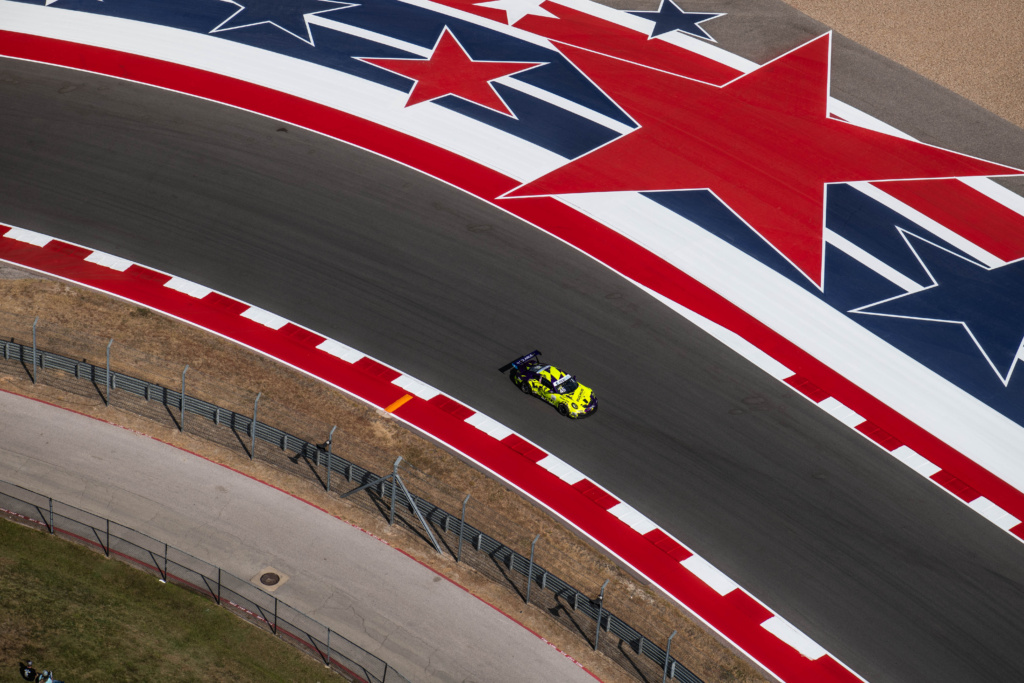
And yet again, Scott Blind topped the Solairus Aviation Masters class charts with a fastest lap time of 2:09.295. It will be the fifth consecutive race that the Masters champion-elect will lead his class to the green flag.
“I had a couple laps that I think I was pretty close (to getting inside the top-15),” said the Ruckus Racing driver. “I just lost it there, but we had a really good qualifying. During the race, I think we can pick some off.”
Rounding out the top three starting positions in Masters were Rob Walker in second and Chris Bellomo in third.
Race 1 for Porsche Carrera Cup North America at COTA is scheduled for later on Saturday at 3:40 p.m. ET (2:40 p.m. local time). The final race of the season follows on Sunday at noon ET.
All Carrera Cup races, including replays from Circuit of the Americas, will be shown live on IMSA and Porsche Motorsport North America YouTube Channels, IMSA TV, Peacock, and the Porsche Motorsport North America social channels on Facebook, LinkedIn, Threads and X.
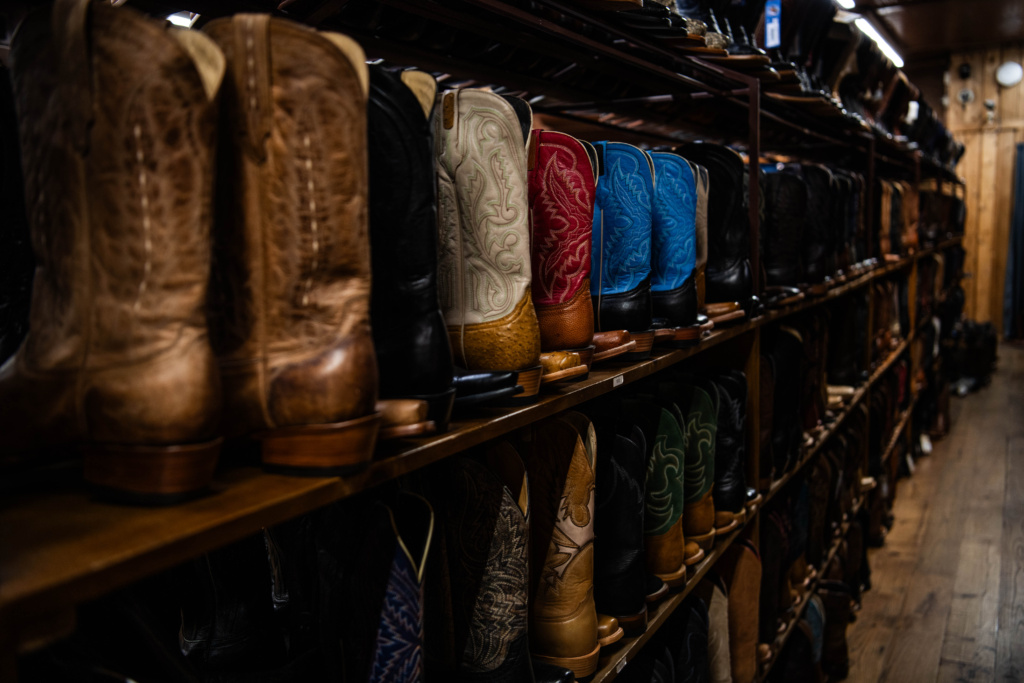
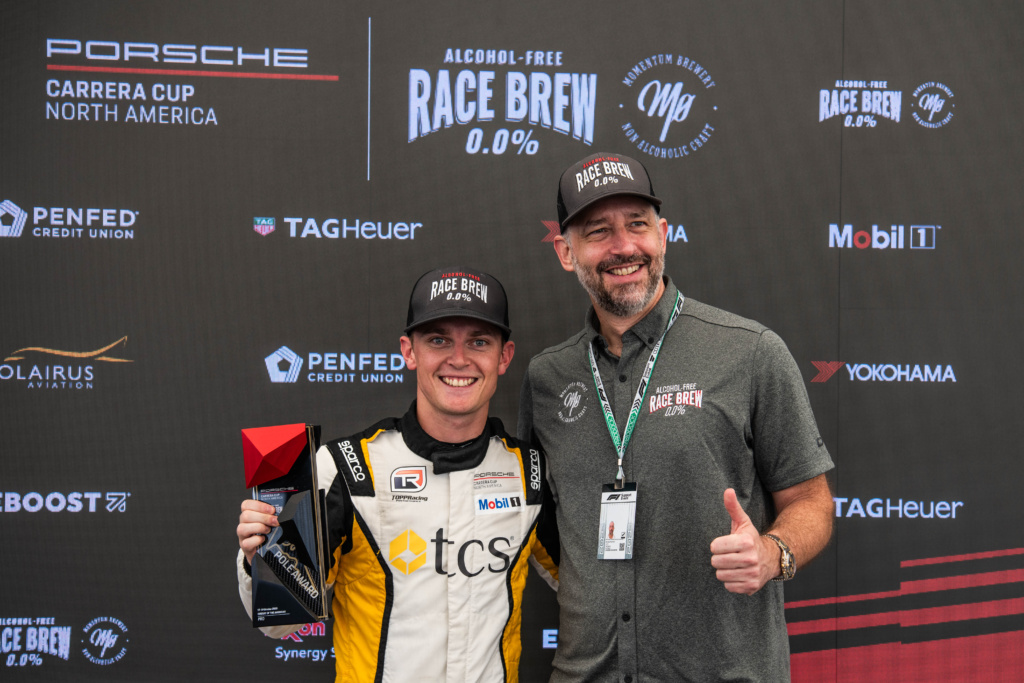

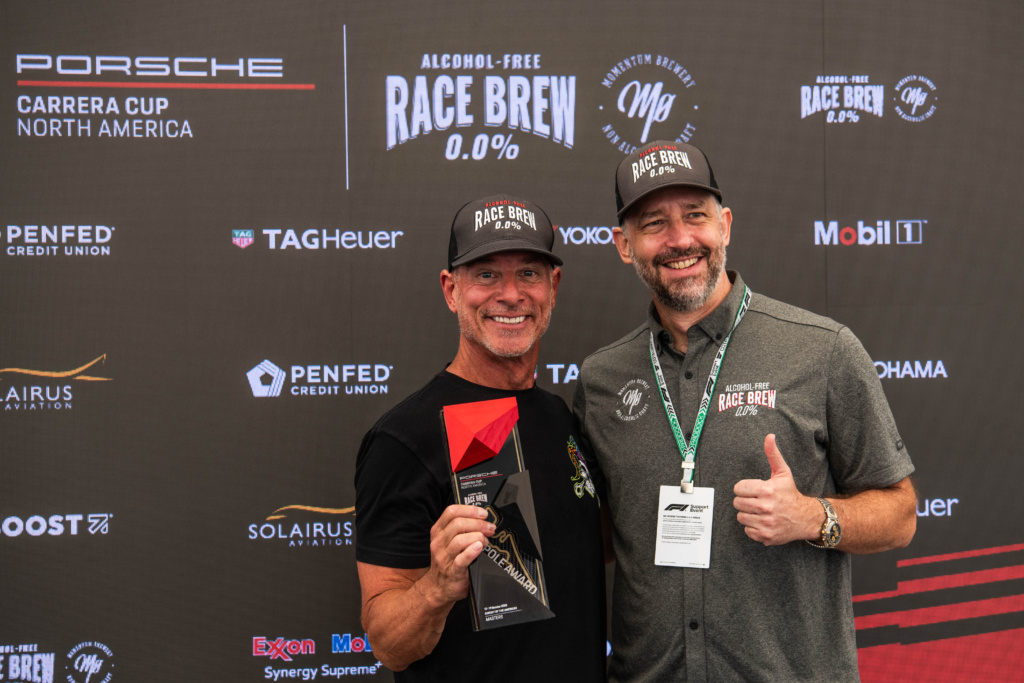
Latest news
In the 2025 Porsche Carrera Cup North America season finale, Riley Dickinson was first out of the gate over championship rival Ryan Yardley, as the Texan local star topped the final practice of the year.
As the Porsche Carrera Cup North America finale unfolds at Circuit of The Americas during the Formula One United States Grand Prix, only two points divide Dickinson and Yardley in the fight for the ExxonMobil Pro class crown.
Dickinson ran fastest in Friday’s lone session with a time of two minutes, 8.225 seconds around the Austin, Texas circuit – which is located less than an hour from his hometown of New Braunfels. But as they are in the point standings, Yardley was right on Dickinson’s heels in second place, just .176 seconds from the lead himself. Tyler Maxson, Yardley’s Topp Racing teammate, finished third.
“Racing on my home track really doesn’t provide any added momentum,” said Dickinson.
“At the end of the day, it’s just another track, coincidentally, just 45 minutes down the road which is nice. I can sleep in my own bed. But no, it’s just another track.
“I love it here, and the fans are already showing out in force this weekend. It’s cool to see everyone up so far on Turn 1. It’ll be a good weekend for everybody.
“At the end of the day, we just have to focus forward and work on hitting every lap that we can, every apex that we can. Like I said in (the last round at) Road Atlanta, the results are going to be what they’re going to be. Just focus on ourselves and see what we can do.”
The Solairus Aviation Pro-Am championship remains undecided as well, with JP Martinez holding a 19-point advantage over fellow Texan and Austin local Alan Metni heading into the season-ending doubleheader.
The pair finished second and third on Friday’s charts behind spotlight-stealer Patrick Mulcahy.
Mulcahy, who will seal third place in the Pro-Am championship this weekend after a win and podium in two of the last four rounds, lapped COTA at 2:10.632. It was .129 seconds quicker than Martinez and .319 seconds quicker than Metni.
“We only have one practice this weekend, but we’ve got to show up and put down a good lap,” said Mulcahy, who drives with GMG Racing.
In the Solairus Aviation Masters category, Ruckus Racing driver Scott Blind wrapped up his title several rounds ago, but continues to set blistering times, including on Friday’s practice at COTA.
Blind finished just behind the top three Pro-Am drivers with a quickest time of 2:11.327 in his Porsche 992 GT3 Cup car.
“As hot as it is, anything can happen,” said Blind. “We’re at the last two races of the season. A top-15 (overall) would really make me feel good. Let’s see what we can do, but I’d be really happy with a top-15.
“I haven’t been out here in a long time, so this first practice, then going tomorrow into quali, I think we’re going to do great.”
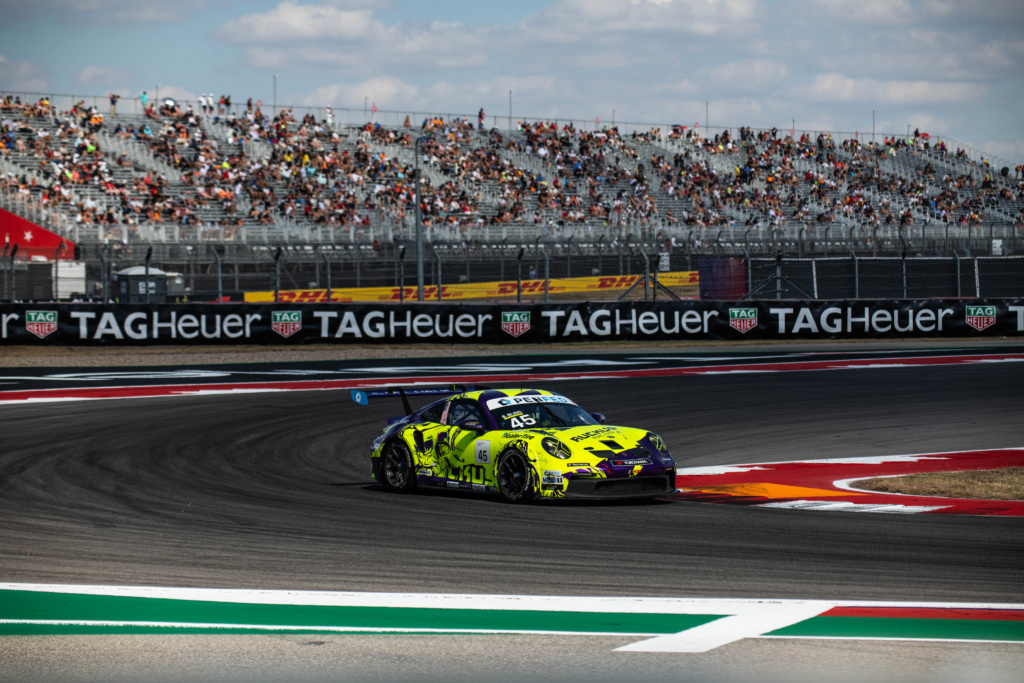
With Friday’s lone practice session now complete, Porsche Carrera Cup North America competitors turn to the weekend’s activities. Saturday’s schedule includes qualifying at 10:45 a.m. ET (9:45 a.m. local) and Race 1 at 3:40 p.m. The season finale takes place Sunday at noon, just before the Formula One United States Grand Prix at 3 p.m.
All Carrera Cup races, including replays from Circuit of the Americas, will be shown live on IMSA and Porsche Motorsport North America YouTube Channels, IMSA TV, Peacock, and the Porsche Motorsport North America social channels on Facebook, Linkedin, Threads and X.

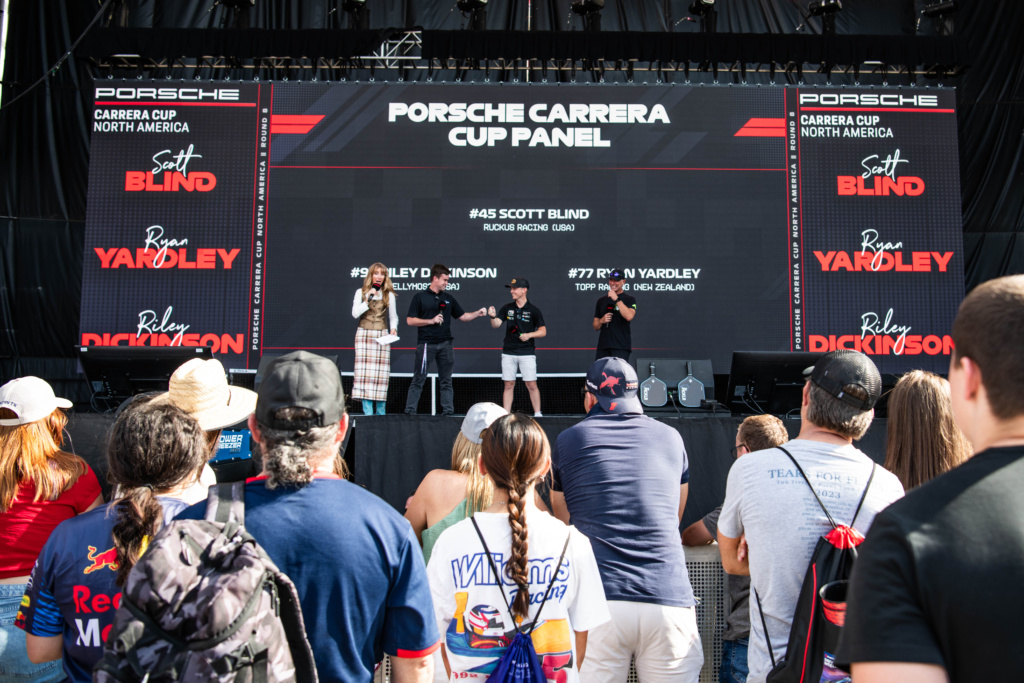
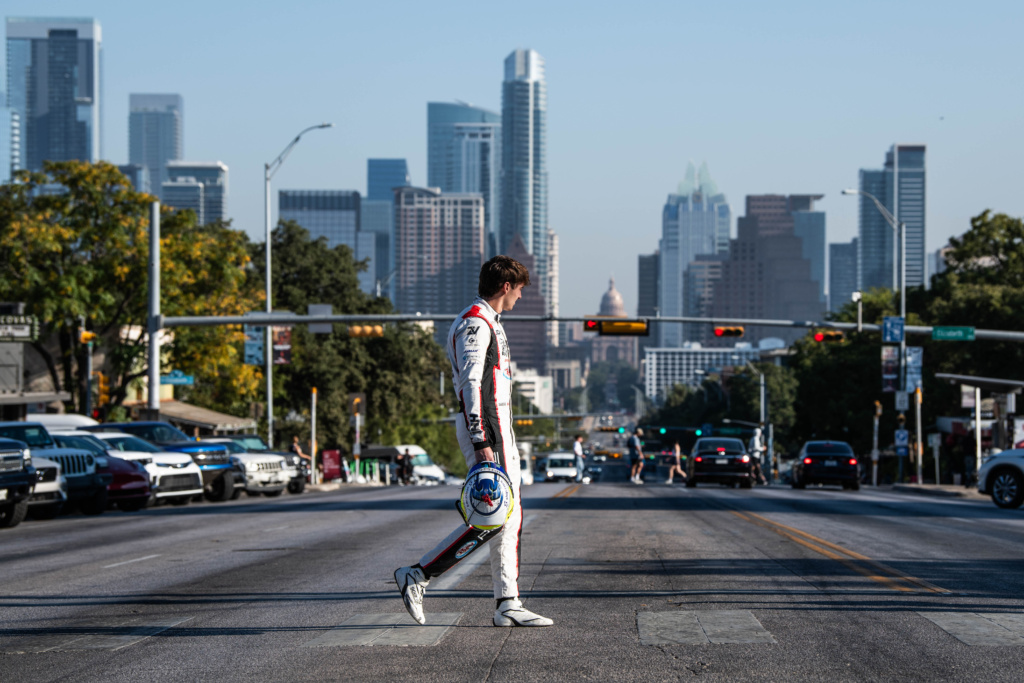

Latest news
This week Porsche Carrera Cup North America heads to Circuit of the Americas in Austin, Texas for the eighth and final round of the 2025 season with championships hanging in the balance. The 26-car entry list includes 16 ExxonMobil Pro class, five Solairus Aviation Pro-Am, and five Solairus Aviation Masters class competitors. The event is part of the Formula One World Championship US Grand Prix weekend.
Both the Pro and Pro-Am titles are up in the air in Austin, while Scott Blind of Ruckus Racing has clinched the Masters class title.
In the ExxonMobil Pro class, just two points separate leader Riley Dickinson (Kellymoss) from Topp Racing’s Ryan Yardley. Yardley had wrestled the lead from Dickinson leaving Indianapolis, but Dickinson won race two at Road Atlanta in Round Seven and is back on top.
Dickinson, the 2023 champion, has earned his top spot in the Driver championship on the strength of a series-high five wins. Yardley has just one win, but podium finishes in 12 of 14 races – including eight second-place finishes. Zachary Vanier of JDX Racing trails Dickinson by 44 points, meaning he is mathematically eligible for the championship with 56 points up for grabs at COTA.
Yardley and teammate Tyler Maxson have boosted Topp Racing to the front of the Entrant standings with one to go. Maxson owns two wins of his own, and Topp Racing is nine points in front of Kellymoss. Kellymoss has gotten support from Dickinson and his rookie teammate Aaron Jeansonne, who has come on strong late in the season with his first win at Indianapolis and a pair of runner-up finishes at Road Atlanta.
Jeansonne and Maxson are battling amongst themselves for a highly competitive Rookie of the Year title, with Jeansonne up by 11 points.
JP Martinez of ACI Racing has led the Solairus Aviation Pro-Am class for the entire season, but Kellymoss driver Alan Metni is still in the hunt. With six wins, Martinez holds a 19-point advantage in the title search. Metni managed to narrow the gap by 19 points with his performance at Road Atlanta, but would have to repeat that effort in Austin for a chance at the crown.
The Round Eight finale begins with a 30-minute practice on the afternoon of Friday, October 17, followed by qualifying on Saturday morning at 9:45 a.m. CT. The pair of 40-minute races run at 2:40 p.m. on Saturday, October 18 and at 11:00 a.m. on Sunday, October 19.

Circuit of the Americas FAST FACTS.
Field.
26 Porsche 911 GT3 Cup race cars are entered for Round Eight and the 2025 season finale at Circuit of the Americas during Formula 1’s US Grand Prix
- ExxonMobil Pro Class. 16
- Solairus Aviation Pro-Am Class. 5
- Solairus Aviation Masters Class. 5
- Teams. 10 race teams across all three classes
Track record.
2:06.237, 2024, Loek Hartog, Kellymoss Porsche 911 GT3 Cup
2024 Race winners.
- Pro:
- Race 1. Zachary Vanier, JDX Racing
- Race 2. Ryan Yardley, Topp Racing
- Pro-Am:
- Race 1. Efrin Castro, Kellymoss
- Race 2. Alan Metni, Kellymoss
- Masters:
- Race 1. Chris Bellomo, Kellymoss
- Race 2. Scott Blind, Ruckus Racing
Point leaders.
- Pro.
Riley Dickinson, No. 91 Kellymoss Porsche 911 GT3 Cup - Pro-Am.
JP Martinez, No. 4 ACI Motorsports Porsche 911 GT3 Cup - Masters.
Scott Blind, No. 45 Ruckus Racing Porsche 911 GT3 Cup (Class Champion) - Teams.
TOPP Racing
Schedule.
All times Central
- Friday, October 17.
2:35 p.m. – 3:05 p.m. – Practice - Saturday, October 18.
9:45 a.m. – 10:15 a.m. – Qualifying (all classes)
2:40 p.m. – 3:20 p.m. – Race 1 (40 minutes) - Sunday, October 19.
11:00 a.m. – 11:40 a.m. – Race 2 (40 minutes)
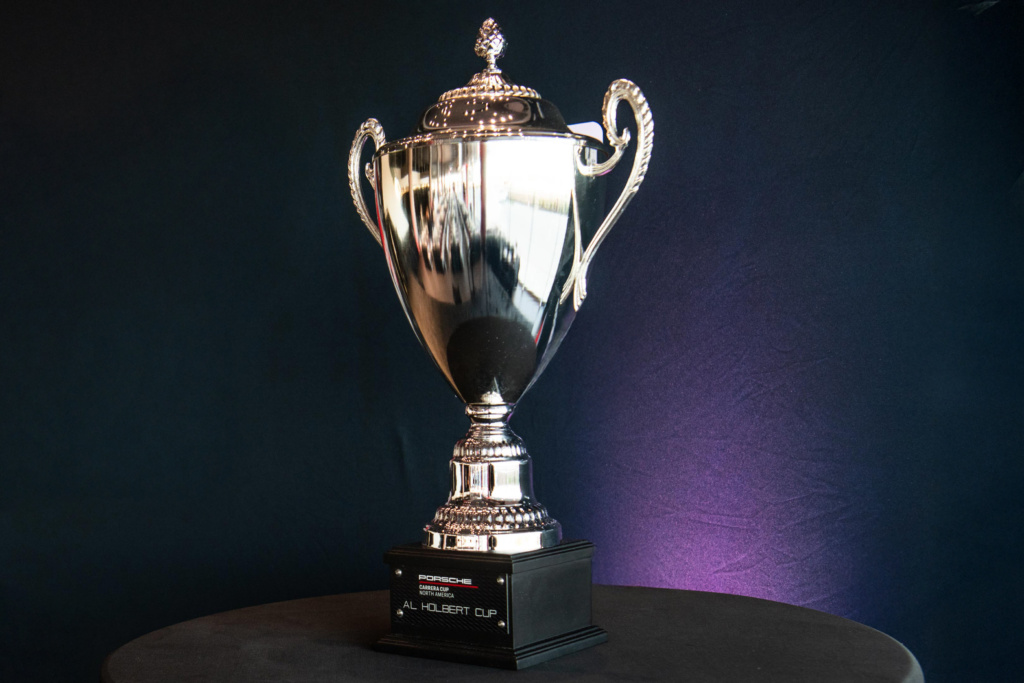
One successful debut.
Cole Kleck took 11 wins in the 992 Pro-Am class of Porsche Sprint Challenge North America on his way to a championship. While the jump to his first Carrera Cup North America was certainly a challenge, the 19-year-old cracked the podium in his first race with a third-place finish and followed it up with a strong seventh-place in race two. Kleck now heads to his home track of Circuit of the Americas for his second weekend of Carrera Cup activity.
Lone Star racers.
In addition to Kleck, who calls San Antonio home, two Kellymoss drivers and native Texans are home this weekend. Both Riley Dickinson and Alan Metni, championship contenders in their respective classes, call the Austin area home. Metni is from Austin, while Dickinson resides just 50 miles southwest of the track in New Braunfels, Texas.

Post event celebration.
Porsche Motorsport North America (PMNA) will recognize all of the 2025 Porsche Carrera Cup North America title winners during the Celebration of Champions on Sunday night at Porsche Austin. Driver, Team and Rookie winners, as well as Rookie of the Year driver are among the celebrations.
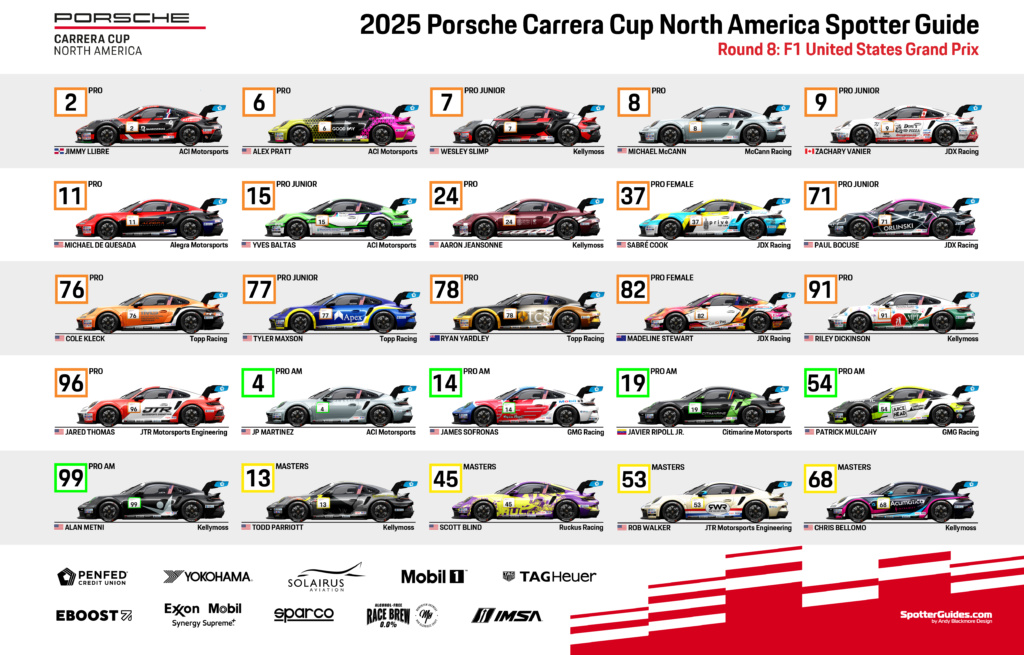
Class descriptions.
ExxonMobil Pro Class.
The highest level of competition in the Porsche Carrera Cup North America. The class is recognized through its orange color scheme. The car entry number will be delineated in orange on the doors, the windshield and rear glass. Headlight covers will be clear with orange cross-marks.
Solairus Aviation Pro-Am Class.
Restricted to drivers who are 35 years old or older as of January 1, 2025. The class is recognized through its green color scheme. The car entry number will be delineated in green on the doors, the windshield and rear glass. Headlight covers will be clear with green cross-marks.
Solairus Aviation Masters Class.
This class is open to drivers who are 50 years old or older as of January 1, 2025. The class is recognized through its yellow color scheme. The car entry number will be delineated in yellow on the doors, the windshield and rear glass. Headlight covers will be clear with yellow cross-marks.
Entry list.
The full Porsche Carrera Cup North America entry list can be found by clicking here.
Points and results.
Event results and current points for Porsche Carrera Cup North America can be found by clicking here.
Broadcast.
All races can be seen live on IMSA and Porsche Motorsport North America YouTube Channels, IMSA TV, Peacock, and the Porsche Motorsport North America social channels on Facebook, LinkedIn, Threads and X.
